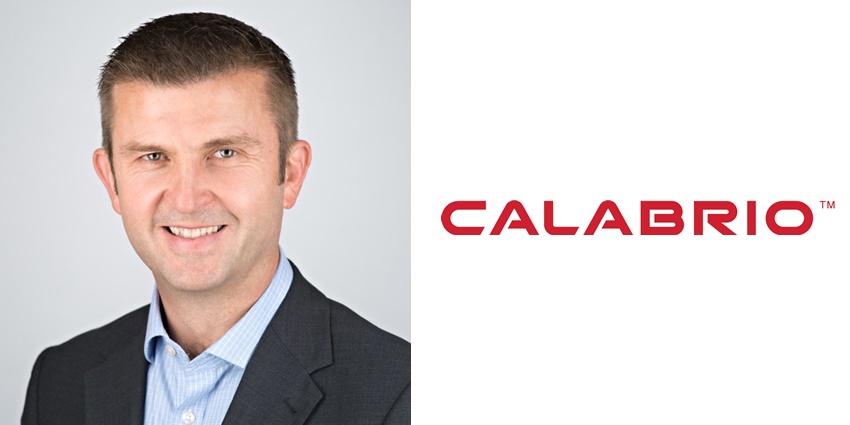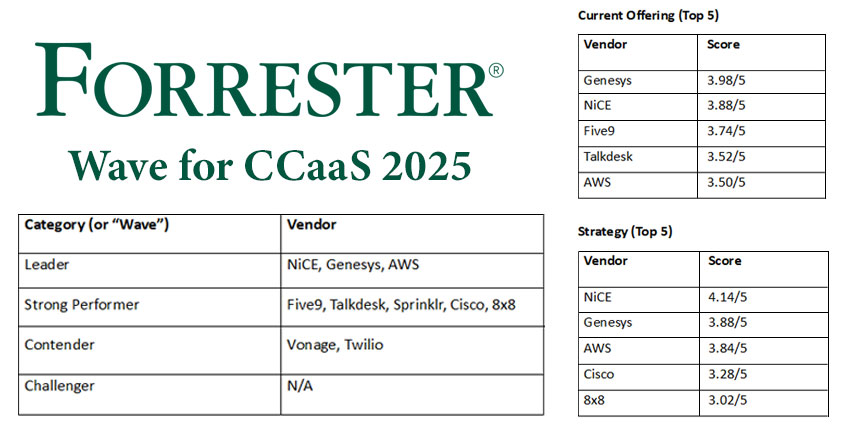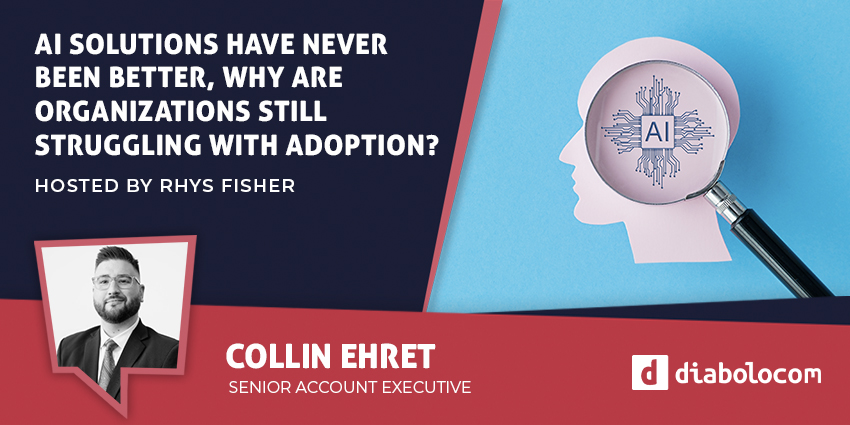Collecting customer data is the starting point in improving customer experience. Yet it’s not just important how the data is collected, what organisations actually do with the data is paramount. Various types of analytical insights can make a tremendous difference when it comes to how organisations interact with customers. Having the history of each and every customer interaction at hand might make or break your business.
The COVID-19 pandemic has pushed organisations to adapt to shifting customer expectations by accelerating digital transition and moving to the cloud. In fact, Calabrio’s 2021 State of the Contact Centre report reveals that 68 percent of cloud migrations occurred during the last year alone. Cloud-based solutions with integrated omni-channel capabilities have been shown to help agents with daily customer inquiries in contrast to agents that have to use on-premise solutions.
In an exclusive interview, CX Today welcomes Ed Creasey, Director of Pre-Sales at Calabrio to walk us through all the benefits of the cloud for analytics and how an analytics-based approach reflects on the customer experience.
True Cloud Capabilities
“Calabrio has always led with workforce engagement management (WEM) in the cloud. The basics of the cloud are well known by now, such as the ability to scale your business as large or as small as you need it. It also provides infrastructure and capabilities without the huge investment that organisations normally have to have when they’re hosting it on premise. “
The cloud is fast becoming known for enterprise-grade built-in security and business continuity, along with enough storage and computing power for constant innovation. These are the essentials that businesses are looking for. One of the major cons of on-premises solutions is the slow implementation of innovation, which can take months or even years to happen. Artificial intelligence and machine learning are instantly available with cloud-based solutions, as opposed to on-premises.
As the report finds, two-thirds of contact centres now recognise that the cloud goes beyond cost-efficiency or flexibility – it directly drives more strategic, smarter business decisions.
Creasey explains:
“For instance, when being more strategically data-driven, it’s very important to have an integrated suite of capabilities. This means getting all your data from your customer journeys, voice calls, messages, chats, emails, social all together into one place, and having a consistent user experience. Equally, if using multiple platforms and vendors to extend functionality, cloud to cloud integrations are key, as that makes sure everything talks to each other.
“The way we try and build our cloud solutions is with a lot of customer feedback in mind. We’re always looking for our end users to give us ideas. Two-thirds of our features come from our community.
“We have an innovation centre that builds products based on their ideas, and they rapidly ideate and design innovations that go into our cloud. Calabrio provides a marketplace of vendors where our customers can buy other vendors’ products. We call this co-opetition, that is cooperative competition where we enable other vendors to sell on our cloud marketplace, with the applications pre-approved by Calabrio as quality assured and fully integrated.”
Customer Journey Analytics
Analytics and customer experience are closely connected in a way that using analytics not only keeps you in the loop with each client interaction but also boosts customer experience by making each interaction count. According to the report, 7 in 10 cloud-powered contact centres say that cloud solutions are enhancing analytics insights for customer and employee data.
Creasey begins:
“You can’t really understand customer experience without analytics. Traditionally there’s a couple of tools being used, which both have inherent challenges. One is quality management or QA which is a manual assessment of the quality of a customer-agent experience. These are critical, but they suffer in a couple of areas, one of which being sample size. Human beings can only do so many at a time, and typically that’s less than 2% of the total customer experience.”
With human beings assessing other humans’ experiences, there is equally a risk of bias. A number of factors can influence the assessment making it highly subjective. The same issue applies to customer survey tools like Net Promoter Score and customer satisfaction surveys. The surveys are often responded to by very happy or very unhappy customers, so the data can be inherently skewed. Furthermore, the declining volumes in these surveys show consumers are exhausted by getting surveyed affecting the real scores and experiences they had.
Creasey continues: “Analytics from a Calabrio perspective means AI-powered interaction analytics across 100% of omnichannel contacts. This analyses phone calls, text (email, chat, asynchronous messaging), social and video, as well as agent desktop usage. We put together what the customers are saying and how the agents are responding in one interface. Everything is recorded, indexed and 100% searchable. From these you can start building use cases.”
“With Calabrio Analytics, it’s possible to search each word said out loud or typed in an interaction and find the one where a customer was dissatisfied. You can automatically identify indicators that a customer will churn, a process has failed or that a customer is likely to complain. Organisations can then easily deliver different treatments to that insight: real-time customer recovery, targeted agent coaching or root cause analysis.”
What’s unique about Calabrio’s solution is that it includes desktop analytics which ensure that agents are solving customer issues by using the appropriate tools available.
Creasey explains: “If you only have the interaction, we have no information about what’s happening when an agent goes quiet or stops typing. With desktop analytics and screen recording, you can analyse and watch what was happening in that silence e.g. if they were using CRM on their desktop, and it was very slow, or if they are searching through a knowledge base to find an answer. It all helps improve employee experience which then enhances customer experiences. Desktop analytics can answer so many questions, like long hold times, silent times, reasons for contacting, reasons for complaining and more.”
“One of the best things I’ve seen people do is use the contact centre analytics to identify downstream demand in the contact centre that was caused by upstream departments. For example, our telco customer Bluegrass Cellular in the US used Analytics to analyse what type of contacts their 3rd line support was dealing with. They found that most of the contacts could be dealt with in 1st line channels (the retail stores or in the frontline customer service.)”
Agility is for both employees and customers
The pandemic caused an intense acceleration in homeworking, digital transformation, as well as consumer behaviour. In these times, consumers are looking for personalised experiences, while employers are trying to serve a highly mobile work-from-anywhere workforce. How can the cloud help with that?
Creasey says: “As I said before, the number one thing is getting all your customer experience channel data together in one place. Often chat, email, and voice are from different vendors, so you need to bring them together into one analytics platform in the cloud. From there you can analyse all customer journeys, from call handling to chat and social. Combining this in a fully integrated workforce engagement management platforms means you can also forecast demand, schedule agents, evaluate quality and provide self-service BI, across all your channels from one place.
Staffing this digitally enabled service has the added complexity that scheduling employees has been a massive issue for the last 12 months. With life shifting pace daily, the essential introduction of flex hours and the accelerated adoption of multichannel service, it’s important to have flexibility and agility to respond to each employee’s needs.
“Planners need to be much more flexible about how they use historical data to predict what’s going to happen. It’s not just year on year trends, week to week or hour by hour. We are all suddenly impacted by government policy or local health lockdowns. As a corollary to the new forecasting requirements, schedulers need to understand the needs of a hybrid workforce. Different shift profiles will be needed to those in the office and those not. Team profiles will change, and shifts will require channel blending, micro-shifts, split shifts and potentially respite shifts.
In these changing times, personalisation and flexibility mean a great deal to employees. “With the gig economy, people need more flexibility. Employees need to change shifts easily. They need to book holidays with confidence which is made easier with a cloud-based scheduling tool. Employees can do everything from home, book a holiday, get overtime, see their schedule, all from their phone or laptop”, concludes Creasey.
Allowing agents to see their own performance and self-assess is a crucial tool for organisations that suddenly find 100% of their staff at home. When you can’t see your employees, you need to engage them in coaching in a different way. Technology like contact recording, quality management and analytics has an enabling role here. But one of the simplest tools is engaging employees in the coaching process with self-assessment.
Many organisations have already seen significant differences in customer engagement, productivity and revenue, thanks to utilising cloud-based Employee Engagement solutions. Moving forward, contact centres will actively look for cloud-smart solutions to double their business outcomes.
For more information about the future of cloud solutions, download the Calabrio report.







